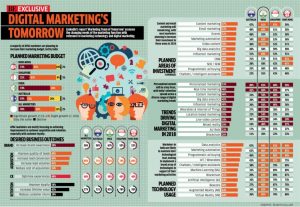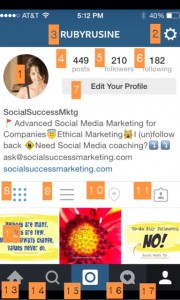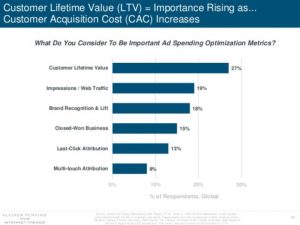Gone are the days when you could write compelling content on your blog and attract a flock of new audience members. Now, people are busier than ever. To capture their attention, you need a page on your website that speaks to them with the right message at the right time.
You need a landing page.
Landing pages are the pages a person first sees when clicking to your website from somewhere else. This somewhere else could be a pay-per-click ad on Google, a Facebook ad, a link from another blog post, or an email.
The goal of each landing page is different. Sometimes, you’re just trying to get someone to give you an email address. Other times, you’re trying to sell your coaching program priced in the thousands. In either case, you need the perfect page that’ll give you the conversions you’re after. That starts with using the right tool to create your landing page.
Here are 5 landing page tools that can help you build out conversion-inducing campaigns.
1. GetResponse Landing Page Creator
This is one of my favorite landing page tools simply because it integrates so seamlessly with a host of other options.
The GetResponse landing page creator gives you access to hundreds of templates that you can use. There’s bound to be a template to fit your business need regardless of what your conversion goal is.
Within each template, you get over 1,000 free iStock images to make your pages come to life in a way that feels good (image wise) for you. The website claims you can have your landing page ready in less than 30 minutes with their system, and I believe that’s true for many people given how easy it is to use.

If you’re a rookie at web design, you can still get an attractive landing page without worry about having to code. Each template can be built with a drag and drop editor. That means if you can click a button on a mouse, you can create a landing page.

Another important feature is that every landing page template is fully mobile responsive. In Google’s eyes, mobile responsiveness is critical these days, so your SEO won’t take a hit.
When you’re ready to hit publish, it’s easy to incorporate your landing page into your other sales funnels (if you use GetResponse). You can set up email funnels, webinars, or other marketing automation scenarios to continue nurturing your leads well after they convert on your landing page. Not bad, especially if you’re only trying to get an email address at first, and not make a sale.
2. LeadPages
LeadPages is one of the more well-known landing page creators. It’s often used by bloggers to capture email addresses and promote events or courses.
Like GetResponse, there are quite a few templates to choose from. With LeadPages, you can see what past companies have gotten in terms of their conversion rates. Keep in mind that these numbers might not be the same for you. A lot depends on who you’re targeting and your overall value proposition.

You can create several pages and test these against each other to find the best message or design. This will ratchet up the cost a little bit, but if budget isn’t a big factor, it can be a good tool to use.
There is also a nice analytics section available that lets you see how many people have viewed your page and how it’s performing. To access the most analytical information from your landing pages, you can use one of the integrations available through LeadPages.
Although valuable, integrations are a small downside to LeadPages. This software focuses exclusively on landing page templates. That means you’ll still need to integrate your email marketing and webinar software.

This isn’t difficult to do, but it does require a small amount of knowing where to find the right codes in the different tools as you finagle them together.
3. LaunchRock
Depending on where you are in your sales cycle, you might need a super basic “coming soon” page for your website instead of a longer, more intricate design. In this case, you might want to consider using LaunchRock.
LaunchRock is a landing page designer that’s easy to use, even for graphic design rookies. The difference between this and Get Response’s landing page creator and LeadPages is that it focuses exclusively on landing pages for businesses that haven’t quite yet opened their doors for business. If that’s where you’re at, this is a great tool! If not, look elsewhere.
Like the first two tools mentioned, LaunchRock comes available with templates. These templates are broken out by industry, making it easier for you to find the right one for your business, even if you’re not quite sure what you need yet.

Another benefit is that these templates are each responsive to mobile devices – something that (as I mentioned earlier) is preferred by Google, so your website won’t get dinged on the SEO-front.
Probably the best part about LaunchRock is the price. You can get started free of charge, which means you’re not on the hook for anything you don’t truly need.
4. Five Second Test
As a rule, you want to limit as many possibilities for distraction on your landing page as possible. That’s why common tips on building a landing page include eliminating the navigation bar and limiting your call-to-action to only be the one thing you’re hoping the person will do –enter an email address, buy, like your Facebook page, etc.
Unfortunately, those are the only elements of distraction you can control.
What you can’t control is the notifications popping up on the person’s computer or phone. You can’t control who is in the room when the person is viewing your landing page, or what they’re doing. As a rule, you only have about five seconds to make an impression before a distraction threatens to steal your audience’s attention.
To ensure you’re making the strongest first impression, you need to know what your audience sees in the first five seconds of landing on your page. The problem? You need unbiased feedback. No one in your company can tell you what the first impression will be because they’re too married to what you’re offering. You need someone completely new to your brand, business, and offering to give you an honest look.
Enter: The Five Second Test.
This tool lets you start a five second test and get people (usually within your target audience) to share with you what they saw in the first five seconds of looking at your page. When the visitor views the test, they’re shown a snippet of your webpage. Here’s a sample test from the website:

After that, the visitor is asked questions about what they saw in the five seconds they were shown the snippet of your website. From there, you can see how people responded. Five Second Test generates a word cloud, giving you excellent visual feedback on your website.

You’ll see what sticks out and what gets glossed over. Use this invaluable insight to tweak your page and boost your conversions.
5. Olark
When someone’s interested in your offer, she’ll usually spend more than five seconds on your page. As she’s digging into your message and deciding if what you offer is right for her, you want to know what she’s thinking. That’s where Olark comes in handy.
Olark is a non-obtrusive tool that you can put on your landing pages to chat with your customers. This little pop up in the bottom right corner lets you offer up help without stealing your visitor’s attention from the message at hand. Here’s what it looks like in action on the Olark website.

Once a question is asked, your agents can see a wealth of information about the visitor, including what they have in their shopping cart, how many pages they’ve viewed, and more.

From this little chat tool, you can gain valuable insight. Specifically, you can see what questions aren’t getting answered on your pages. Not only can you answer the question right away, making your visitor happier (and more likely to convert) before she leaves, but you can take this feedback and make tweaks to help convert future visitors.
Ready, Set, Build
There are many landing page tools out there, ready to help you create attractive pages. When trying to decide, think carefully about what’ll drive the best conversions for your goals. If your goal is simply to gather email addresses ahead of your launch, something as simple as LaunchRock might be best for you. If your goals are a little more robust, you might want to have more advanced templates (that are still easy to use) and tools that can give you the type of feedback that’ll let you boost your conversions.
What landing page tool has caught your eye?
* Adapted lead image: Public Domain, pixabay.com via getstencil.com
The post 5 Landing Page Tools to Boost Your Conversions appeared first on Search Engine People Blog.
Search Engine People Blog(75)








